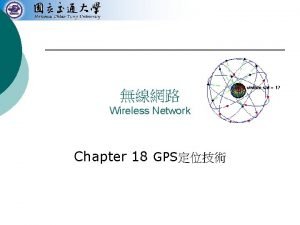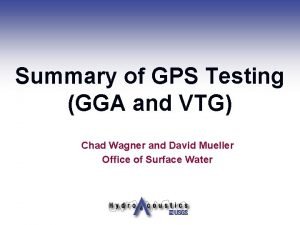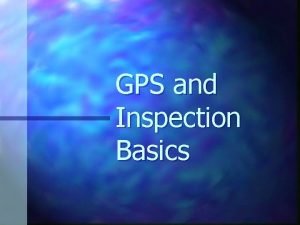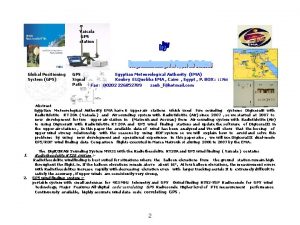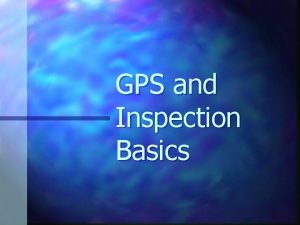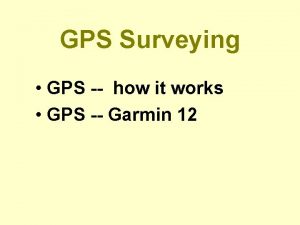GPSMicrophone GPS Processing Standard NMEA 2 0 GGA











- Slides: 11


GPS-Microphone GPS Processing Standard NMEA 2. 0 GGA and RMC sentences Utilizes SIRF 3 based receiver Typical accuracy within 5 meters Data Modem Interface FFSK/MSK data communication over existing voice channel 2400 bits-per-second data rate FEC, CRC, Interleaving and data scrambling used Messages include 8 character unit ID

GPS-Microphone Poll-Based Position Reporting GPS-Mic always responds to location query requests from the Basestation

GPS-Microphone Automatic Position Reporting Modes 1. Push-To-Talk (PTT) switch activated Position report sent either on every PTT or a time-throttled basis

GPS-Microphone Automatic Position Reporting Modes 2. Fixed-Time Based Periodic reporting of position Time interval value : 1 – 255 Time interval units: seconds, minutes, hours, or days

GPS-Microphone Automatic Position Reporting Modes 3. Fixed-Distance Based Position reported if location change exceeds set distance threshold Distance Threshold : 100 meters – 64 Km Operational modes: absolute (e. g. geo-fence) or relative (between successive location reads) Uses separate periodic time check which may be set by user

GPS-Microphone Panic Position Reporting Mode Special “man down” button on unit initiates periodic panic message with position report Manual activation/deactivation button press period is programmable Rate of reporting to Basestation is programmable Basestation can acknowledge and deactivate through over-theair command

GPS-Microphone On-Board Memory Features Unit can store up to 1500 position reports in non-volatile memory Programmable location storage modes: Conditional and Temporary Only used to prevent data loss if currently unable to report Copy or Audit Locations are both stored on-board and reported over the air Deferred Over-The-Air Locations are stored on-board but not reported over the air, unless directed to through Base station command.

GPS-Microphone Unit and Basestation Messaging Features High-reliability communication protocol using handshakes and retries Supports Base station broadcast messages to all units Efficient time-slot management scheme for unit responses to reduce probability of collisions and need for extraneous data messaging Supports Base station multi-cast messages to up to 15 separate GPS-Mic groups Units may be assigned to groups at time of Unit ID designation and provisioning Can reduce data messaging and simplify equipment management


 Gps gps gps
Gps gps gps Gps gps gps
Gps gps gps Gpgga wiki
Gpgga wiki Vtg gps
Vtg gps Fractal
Fractal Point processing in image processing
Point processing in image processing Bottom-up processing examples
Bottom-up processing examples Histogram processing in digital image processing
Histogram processing in digital image processing Top down vs bottom up psychology
Top down vs bottom up psychology Thinning and thickening in image processing example
Thinning and thickening in image processing example Point processing and neighbourhood processing
Point processing and neighbourhood processing Parallel processing vs concurrent processing
Parallel processing vs concurrent processing
